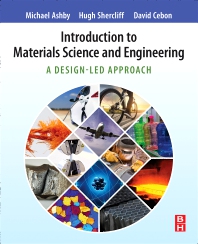Books in Materials selection
Books in Materials selection

Materials Informatics
- 1st Edition
- Krishna Rajan
- English

Lightweight Composites
- 1st Edition
- Mrityunjay Doddamani + 2 more
- English

Sustainable Packaging Strengthened by Biomass
- 1st Edition
- Arbind Prasad + 3 more
- English

Piezoelectric Materials, Composites, and Devices
- 1st Edition
- Fumio Narita + 1 more
- English

Low-Dimensional Materials
- 1st Edition
- Hui-Ming Cheng + 3 more
- English

Materials Selection in Mechanical Design
- 6th Edition
- Michael F. Ashby
- English

Advanced Radiation Shielding Materials
- 1st Edition
- Sarika Verma + 1 more
- English

Steels
- 5th Edition
- H.K.D.H. Bhadeshia + 1 more
- English

Introduction to Materials Science and Engineering
- 1st Edition
- Michael F. Ashby + 2 more
- English

Materials and the Environment
- 3rd Edition
- Michael F. Ashby
- English